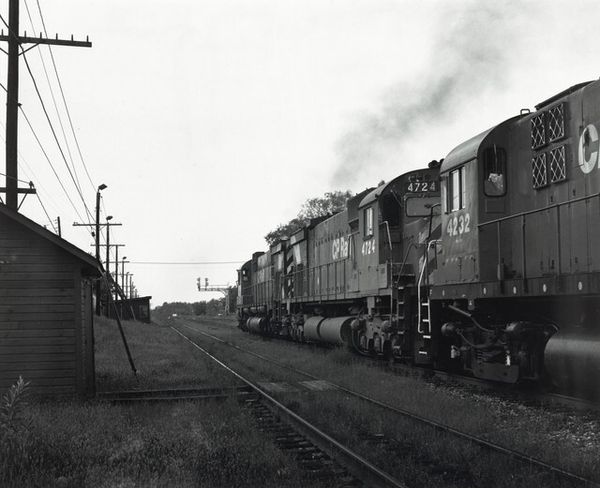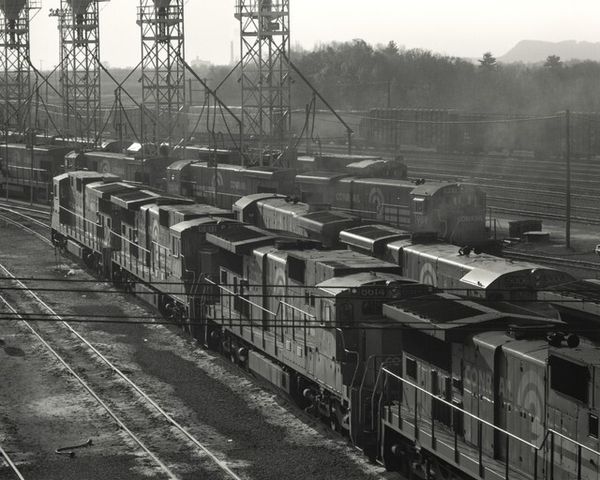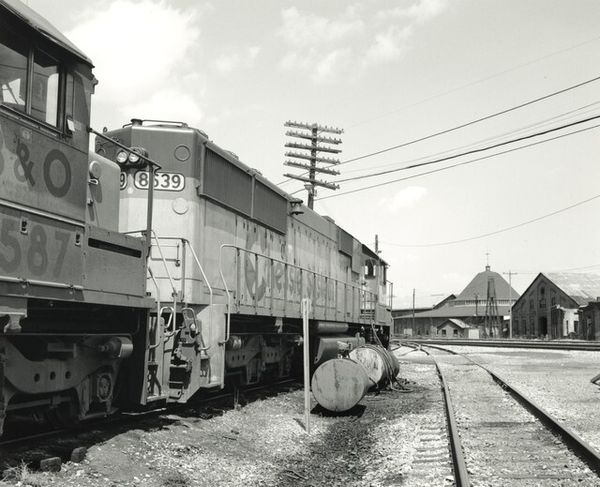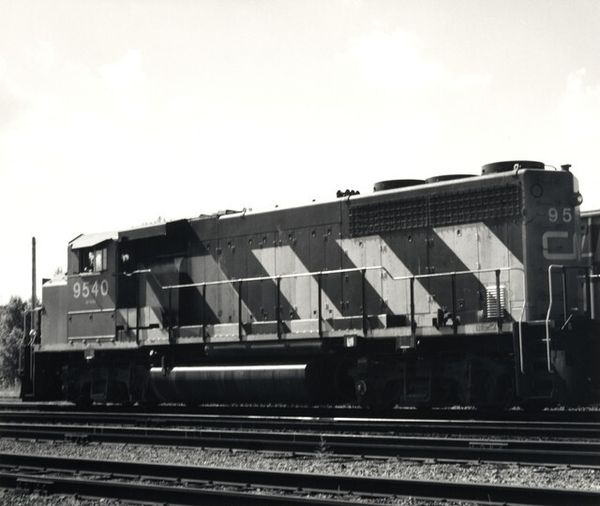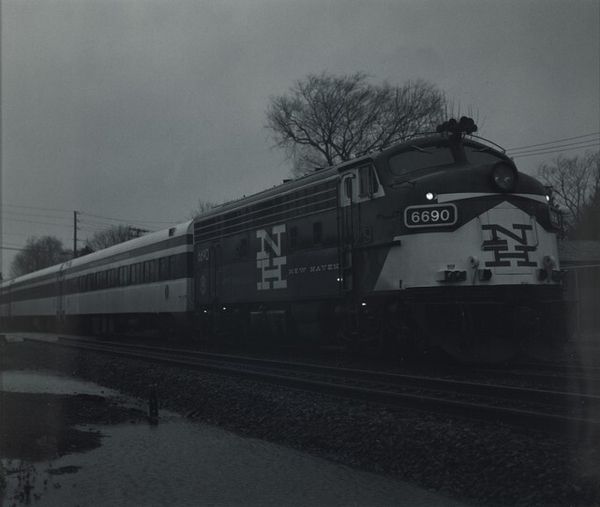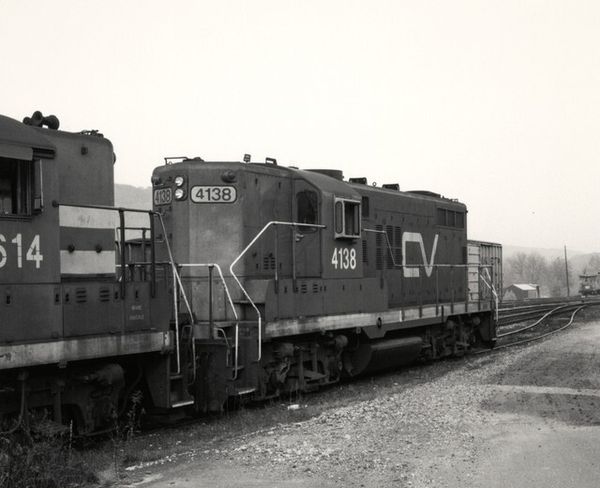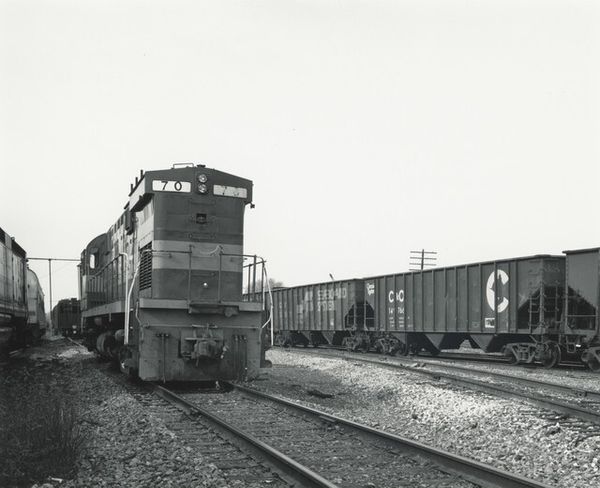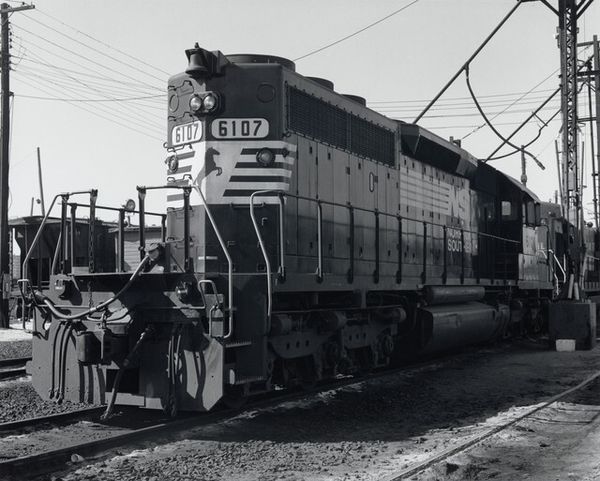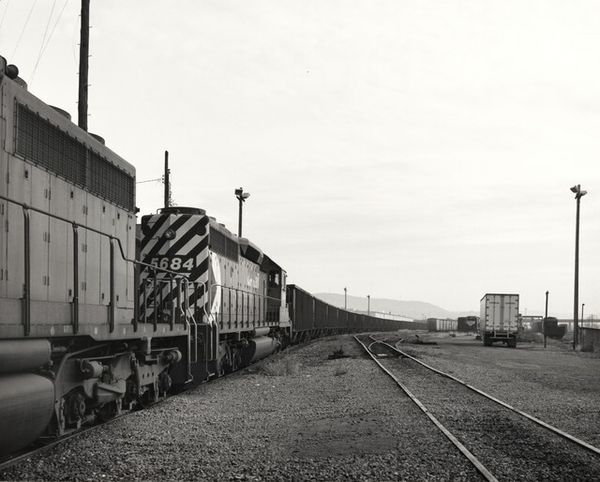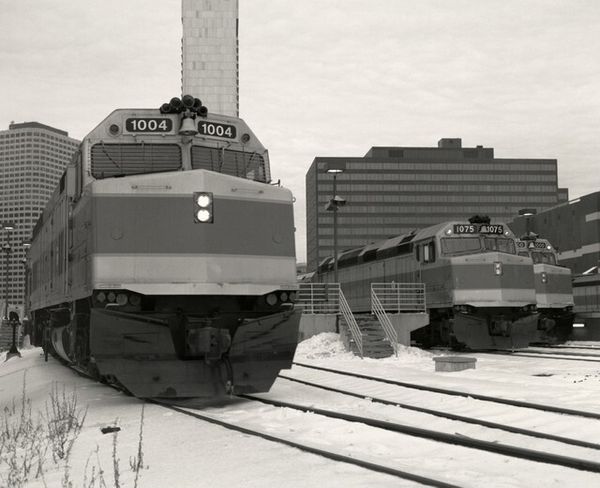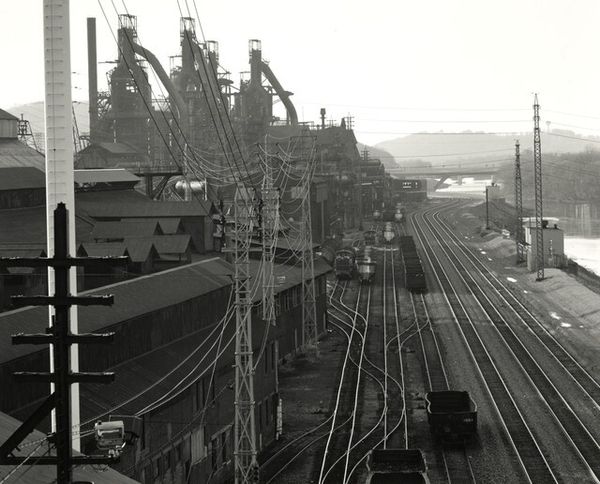
photography
#
still-life-photography
#
contemporary
#
vehicle photography
#
landscape
#
photography
#
vehicle
#
cityscape
#
modernism
Dimensions: image: 23.5 × 28.58 cm (11 1/4 × 9 1/4 in.) mat: 54.61 × 44.45 cm (21 1/2 × 17 1/2 in.) framed: 59.69 × 49.53 cm (23 1/2 × 19 1/2 in.)
Copyright: National Gallery of Art: CC0 1.0
Curator: Let's turn our attention to James Welling's photograph, "Conrail SD50, Suffern, New York," taken in 1990. Editor: It's incredibly stark. The grayscale and elevated perspective really emphasize the train's imposing scale and the industrial landscape. There's a definite sense of controlled power and decay present. Curator: The choice to shoot in black and white, and the setting itself, are fascinating. Conrail, as a freight rail system, held a significant place in the northeast's economic infrastructure, a lifeline almost, reflecting broader post-industrial shifts at the time. Editor: Absolutely. And look at the texture of the train itself: the worn paint, the rivets. You get a sense of the materials pushed to their limit, the tangible impact of constant labor and transport. It is revealing how photographic work of a train embodies high modernist concerns of production. Curator: Welling, though, wasn’t strictly a documentarian. The elevated perspective transforms a workaday scene into something monumental. Think about how museums have preserved steam and diesel engines. We have a historical imperative to archive the transition from manufacturing to information society in postindustrial rust belts. Editor: That's right, it raises questions about how we value these massive objects that were once vital to American commerce. And the way Welling captures the light creates a certain flatness, a detachment almost, that encourages you to analyze its presence not only materially, but culturally. Curator: It seems, too, Welling may be commenting on the sublime, the almost overwhelming presence of the industrial, which contrasts dramatically with the domestic space beside the tracks, further exploring a political commentary in a small city outside of New York City. Editor: Yes, it does feel unresolved and raw. This piece certainly prompts contemplation on the intersection of materials, processes, and our ever-changing relationship with labor and consumption, with echoes of a vanishing American manufacturing history. Curator: A really valuable point! It goes beyond simply seeing a train; it’s a record of a particular socio-economic moment rendered through its architecture and landscape, with broader historical implications. Editor: And perhaps even the train engineer is pondering the future of his profession, which opens questions about technology and work relations in the service sector today. Curator: I concur; thank you for those final sentiments!
Comments
No comments
Be the first to comment and join the conversation on the ultimate creative platform.
